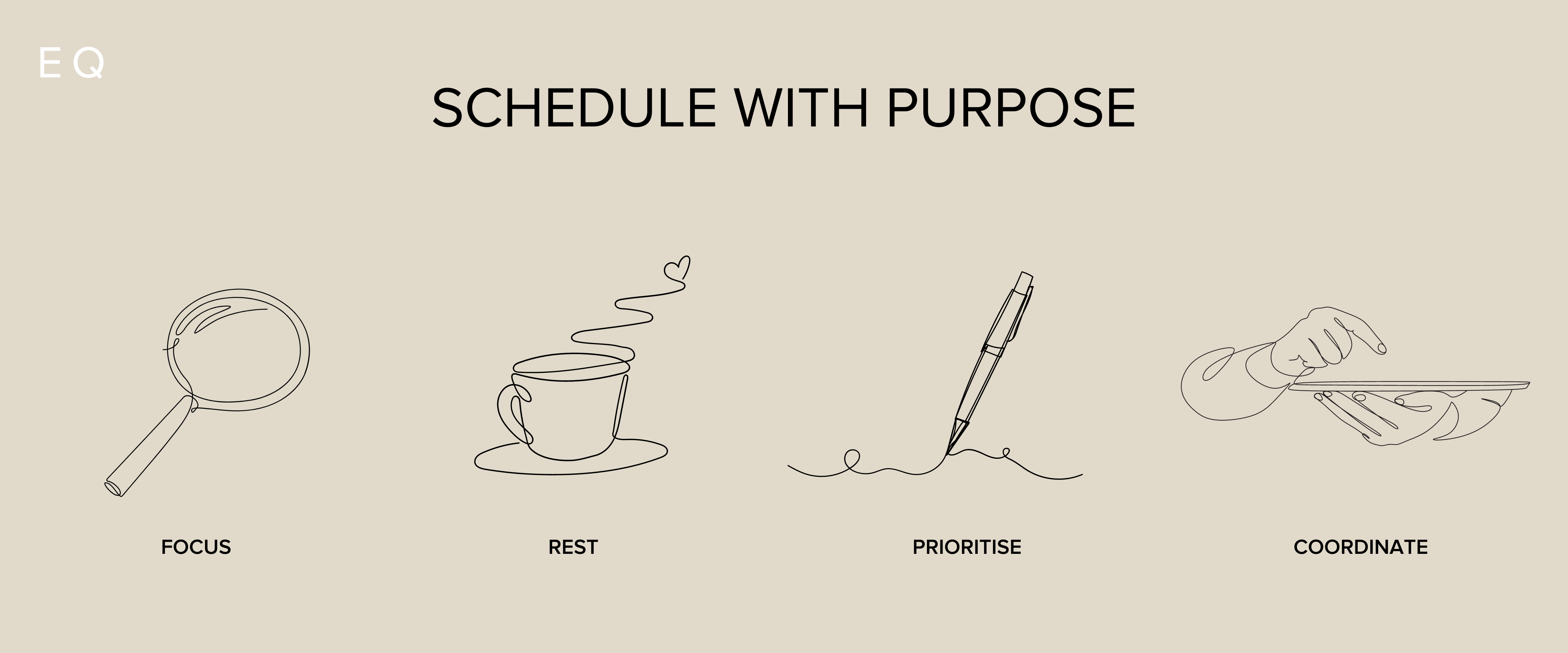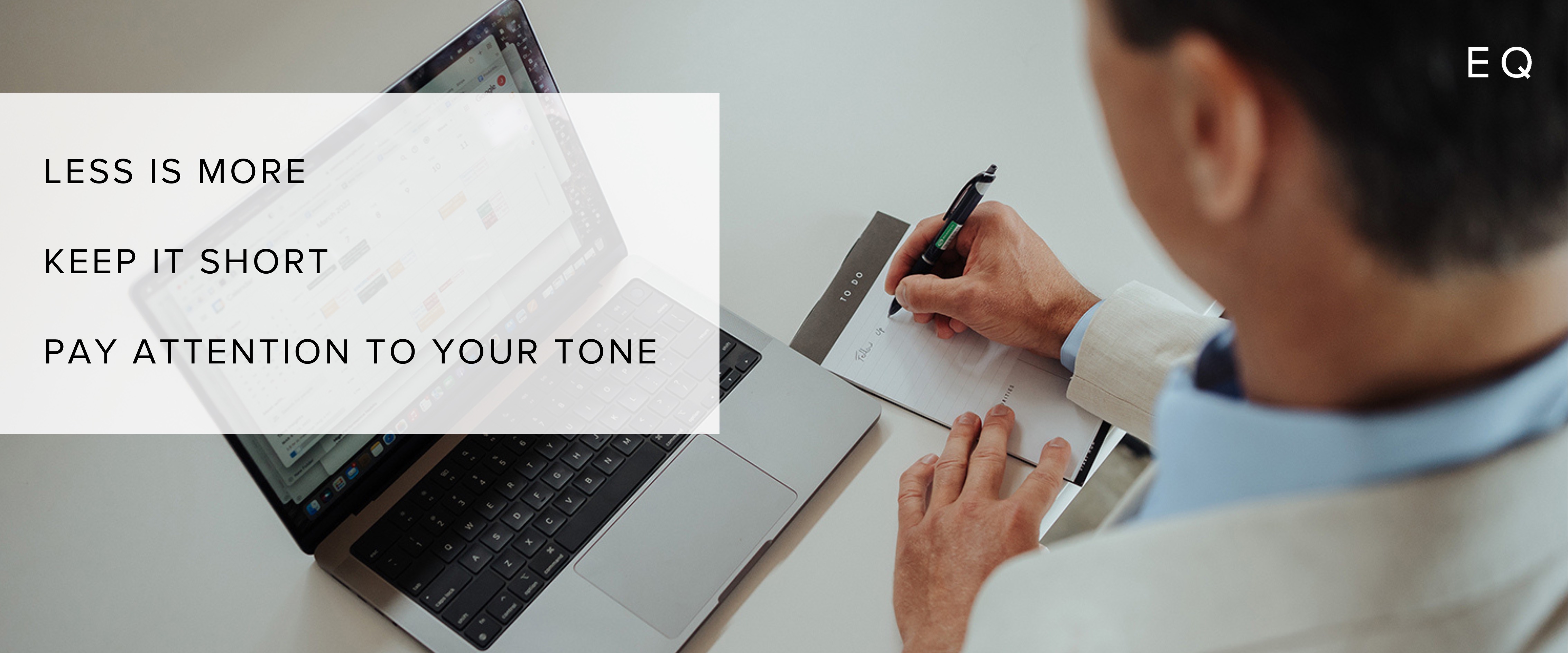How to use the Technology of Hybrid Work Better
Apr 26, 2023
Technology can either make or break the hybrid workplace. It can facilitate productivity, communication and connection, but it can also be a source of stress, distraction and burnout. The key is to use these tools with mindfulness and purpose. In this blog, we're focusing on the most common tools that can help and hinder the hybrid workplace: emails, meetings and calendars.

The calendar is an often-overlooked tool that can help your productivity and work-life balance. To make your calendar work for you in the hybrid workplace, there are four simple principles to keep in mind: focus, rest, prioritisation and coordination.
Focus:
With so many distractions at home and in the office, it's important to schedule deep work time on your calendar. This means carving out uninterrupted time for those important tasks that require concentration. Use your chronotype to identify the times of day when you're most alert and focused, and schedule your deep work accordingly.
Rest:
Taking breaks throughout the day is essential to avoid burnout and staying refreshed. Schedule breaks in your calendar and stick to them. Use this time to recharge your batteries and come back to your work re-energized.
Prioritise:
With competing demands on your time, it's important to know which tasks are most important. Schedule those crucial tasks during the times when you're most productive, whether that's in the morning, afternoon or evening. This will help you accomplish more in less time.
Coordination:
Use your calendar to coordinate with your team. Schedule meetings and sync up on what days you'll be in the office and what days you'll be working from home. This makes sure that everyone is on the same page and working together effectively. Also, use your calendar to communicate your work hours visually, setting boundaries and informing your team when you're available and when you aren’t.
Your Emails:

To effectively communicate in a hybrid workplace, email is a necessary tool but one that can be plagued by bad habits. Not only can these habits affect your mindset, but the recipients as well. Here are some tips to improve your email behaviour.
Less is More:
Limit the number of emails you send. Prioritise which messages really need to be sent via email and which ones can be handled in other ways.
Keep it short:
Long, rambling emails can quickly lose the reader's attention and create confusion. Keep your emails concise and focused, and make sure the important information is easy to find.
Pay attention to your tone.
An email will always be read in the tone of the other person's mood. It can be easy for the tone of an email to be misinterpreted, especially in the absence of body language and tone of voice. Be mindful of your word choice and always proofread your emails for lines that could be misread.
Your Meetings:

Deciding between in-person and virtual meetings is a constant decision for the hybrid worker. Each has its own advantages and disadvantages, and the decision ultimately depends on the goals of the meeting and the preferences of the participants.
When to Have In-person Meetings:
Building Relationships: In-person meetings are ideal for building and nurturing relationships. Face-to-face interactions allow for non-verbal communication, which is an essential part of building trust and establishing rapport with team members, clients, and stakeholders.
Brainstorming and Creativity: Collaborative brainstorming sessions and creative workshops are often more effective in person. When you're in the same room, you can easily bounce ideas off one another, sketch on whiteboards or paper and physically move around to generate new ideas.
Conflicting Views: If there are conflicting views that need to be discussed, it's often best to have an in-person meeting. Being in the same room allows people to read body language, hear tone of voice, and respond in real-time, leading to a better understanding of each other's perspectives and more effective problem-solving.
When to have virtual meetings:
Virtual meetings are perfect for quick check-ins and routine updates. They are often more convenient and time-efficient than in-person meetings, as participants can join from anywhere.
Technology is an integral part of the hybrid workplace, but it's up to us to use it with purpose. By adopting mindful practices when it comes to email, meetings, and calendars, we can increase productivity and communication while reducing stress and burnout.
For more tips on tools in the hybrid workplace, head to Jay Pottenger and Ashley Whitehead's workshops:

